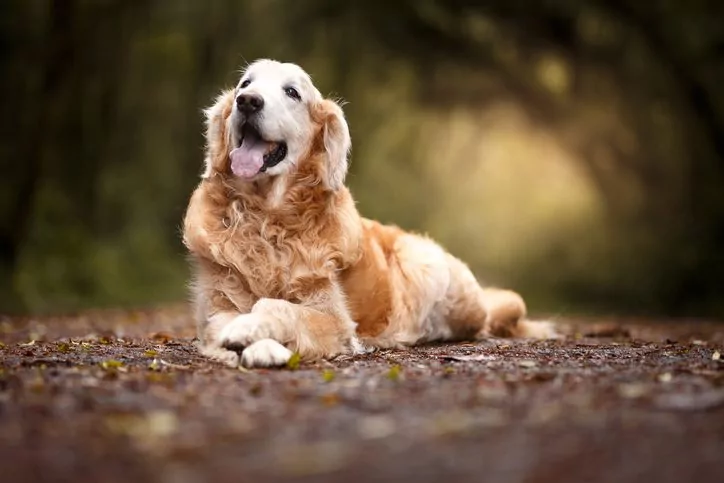Dog Flu Symptoms: What to Look Out For in Raleigh, NC
Humans are most likely to get the flu during “flu season,” which is typically the worst during December and February in the United States. For dogs, flu season is year-round.
In this article, we’ll go over the common dog flu symptoms that dog owners in Raleigh, NC should be on the lookout for.

What is Canine Influenza?
Dog flu is an infectious upper respiratory disease. Similar to the influenza strain that affects people, it is caused by an influenza A virus. There are two known strains of canine influenza in the United States – H3N8 and H3N2. H3N8 originated in horses and jumped to dogs in 2004. The first outbreak was linked to racing greyhounds at a racetrack in Florida. H3N2 originated in Asia and is believed to have jumped from birds to canines. This is the most prevalent strain of canine influenza in the United States and has caused outbreaks in 2015 and 2016.
According to the AVMA, canine influenza is transmitted through droplets or aerosols containing respiratory secretions from coughing, barking and sneezing. Dogs in close contact with infected dogs in places such as kennels, groomers, day care facilities and shelters are at increased risk of infection. Canine influenza can be spread indirectly through objects (e.g., kennels, food and water bowls, collars and leashes) or people that have been in contact with infected dogs. It is important to clean and disinfect objects that have been in contact with an infected dog to avoid exposing other dogs to the virus. Likewise, people who have been in contact with an infected dog should wash their hands and clean their clothing to avoid spreading the virus.
Because canine influenza is extremely contagious, it’s important to isolate your dog away from other dogs. The incubation period is two to four days from exposure, with symptoms typically beginning to show around day four. Dogs with H3N2 are contagious for as many as 26 days, while dogs infected with H3N8 only run the risk of infecting others for up to 10 days after exposure.
If your dog has been around another that has the dog flu, it is more likely than not that he/she has contracted it too. But not all dogs who are infected with canine influenza will show symptoms. It’s estimated that between 20 and 25 percent of infected dogs are asymptomatic, however they are still capable of infecting others. If you have multiple dogs but only one is showing signs, it’s still important to isolate all your dogs.
If you suspect only one of your pups has the flu, try to quarantine them from the others in your house. Don’t allow them to share toys, water or food bowls, and keep them apart as much as possible. You can talk to your veterinarian about ways to isolate them from one another.
What Are the Symptoms of Canine Influenza?
The dog flu can range from mild to severe, often depending on your dog’s age and how healthy he/she is. Older and younger dogs, as well as dogs with underlying medical conditions are in the most danger of having the flu turn serious. Here are some symptoms to look out for:
Coughing
Since the virus attacks the respiratory system, and infected pup is more than likely to have a cough. This can be a wet, seemingly “productive” cough, or a dry cough.
Sneezing
Everyone sneezes from time to time but if you find your dogs having sneezing fits or doing it more frequently, it could be cause for alarm.
Runny Nose
Dog’s noses are usually wet – this is because dogs produce mucus that helps them pick up more scents – but if you notice them licking their nose often or anything dripping from the nostrils, they may have a runny nose. If the mucus is “purulent” (green, gray or yellow) an infection is likely.
Runny or Watery Eyes
Sometimes having a watery eye could just mean your dog has a hair or other irritant in it, but if your dog looks like they’re constantly crying, it’s usually a sign of infection.
Fever
A dog’s average temperature is higher than a human’s – ranging between 99.5° F to 102.5° F. The most accurate way to take your dog’s temperature is rectally, and since not many of us have an at-home thermometer we’re willing to put to that purpose, you can look for these signs that your dog is running a fever:
- Redness in the sclera – or whites of the eye.
- Ears that seem warmer than the rest of the body.
- Warm, dry nose (note: this is not always an indication of a fever in dogs. Sometimes dogs who’ve just woken up from a nap in the sun or another warm, dry spot will have a dry nose.)
- Loss of appetite.
Lethargy
Adult dogs usually get about 12 to 14 hours of sleep a day (puppies and geriatric dogs tend to get a little more.) If your dog is taking more snoozes than usual, it’s possible they’re not feeling well.
Difficulty Breathing
There are a few ways to tell if your dog is having trouble breathing:
- Tummy going up and down as well as the chest
- Flaring nostrils with each breath
- Breathing through the mouth
- Excessive panting
- Breathing with her elbows sticking out from their body
- Shallow breathing
- Rapid breathing
- Chest sounds during inhales and exhales
- Neck and head low and extended from the body
Can Canine Influenza Be Cured?
In short, just as the human flu, there’s no cure for the canine flu. However, you should still take your dog to your veterinarian if you suspect he/she has canine influenza. Some states require that your vet report cases of dog flu to help the government monitor the spread of the disease. Remember how H3N8 jumped from horses and H3N2 from birds to dogs? Keeping close track of various flu strains is helpful in case another such jump occurs between species.
Treatment for canine influenza is strictly supportive, and your veterinarian can give you tips about the best way to make your dog comfortable while they recover. In more severe cases, your dog may need additional care, like intravenous or subcutaneous fluids, to help if he/she is dehydrated. If your dog has a high fever, non-steroidal anti-inflammatory medications may be prescribed to lower their body temperature.
Can Canine Influenza Be Prevented?
Keeping your dog from places that have recent cases of the dog flu is the best idea. If you believe you’ve encountered a dog with canine influenza, it is important to wash your hands and arms and change your clothing before touching your dog.
Vaccines are available for both H3N8 and H3N2 canine influenza. A bivalent vaccine offering protection against both strains is also available. Currently, there are no canine influenza vaccines approved for use in cats. Vaccination can reduce the risk of a dog contracting canine influenza. Vaccination may not all together prevent an infection, but it may reduce the severity and duration of clinical illness.
The canine influenza vaccine is a “lifestyle” vaccine, and is not recommended for every dog. In general, the vaccine is intended to protect dogs at risk for exposure to the canine influenza virus, which includes those that participate in activities with many other dogs or are housed in communal facilities, particularly where the virus is prevalent. Dogs that may benefit from canine influenza vaccination include those that receive the kennel cough (Bordetella/parainfluenza) vaccine, because the risk groups are similar. Dog owners should consult with their veterinarian to determine their dog’s risk of exposure to the canine influenza virus and if vaccination is appropriate for their dog.
If your dog has a weakened immune system, frequents kennels or travels often, or if you live in an area where there is a high incidence of the dog flu, your veterinarian may recommend a vaccine.
Recent Posts
Managing Cat and Dog Anxiety During the Holidays
Managing Cat and Dog Anxiety During the Holidays Let’s face it: our pets are part of our…
Managing and Treating Joint Pain in Senior Pets
Managing and Treating Joint Pain in Senior Pets November is Senior Pet Month, and it’s the purr-fect…
Dog Flu: Recognizing Canine Influenza Symptoms and Care Tips
Dog Flu: Recognizing Canine Influenza Symptoms and Care Tips We know you consider your furry family members…
Cat Drooling: What Cat Owners Need to Know
Cat Drooling: What Cat Owners Need to Know When it comes to our feline friends, a little…
Why is My Cat Sneezing So Much in Raleigh, NC?
Why is My Cat Sneezing So Much in Raleigh, NC? Like us humans, sometimes our pets sneeze…
About Bowman Animal Hospital & Cat Clinic
Established in 1986 by Dr. Gale Bowman, Bowman Animal Hospital and Cat Clinic is dedicated solely to the health and well-being of our pet community. We are a team of compassionate veterinarians and pet lovers who invest our time and resources into providing the very best medical care to your pet.






